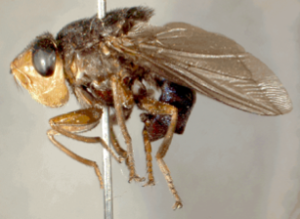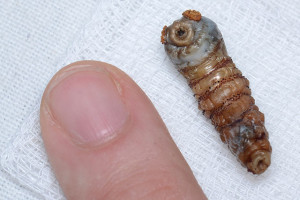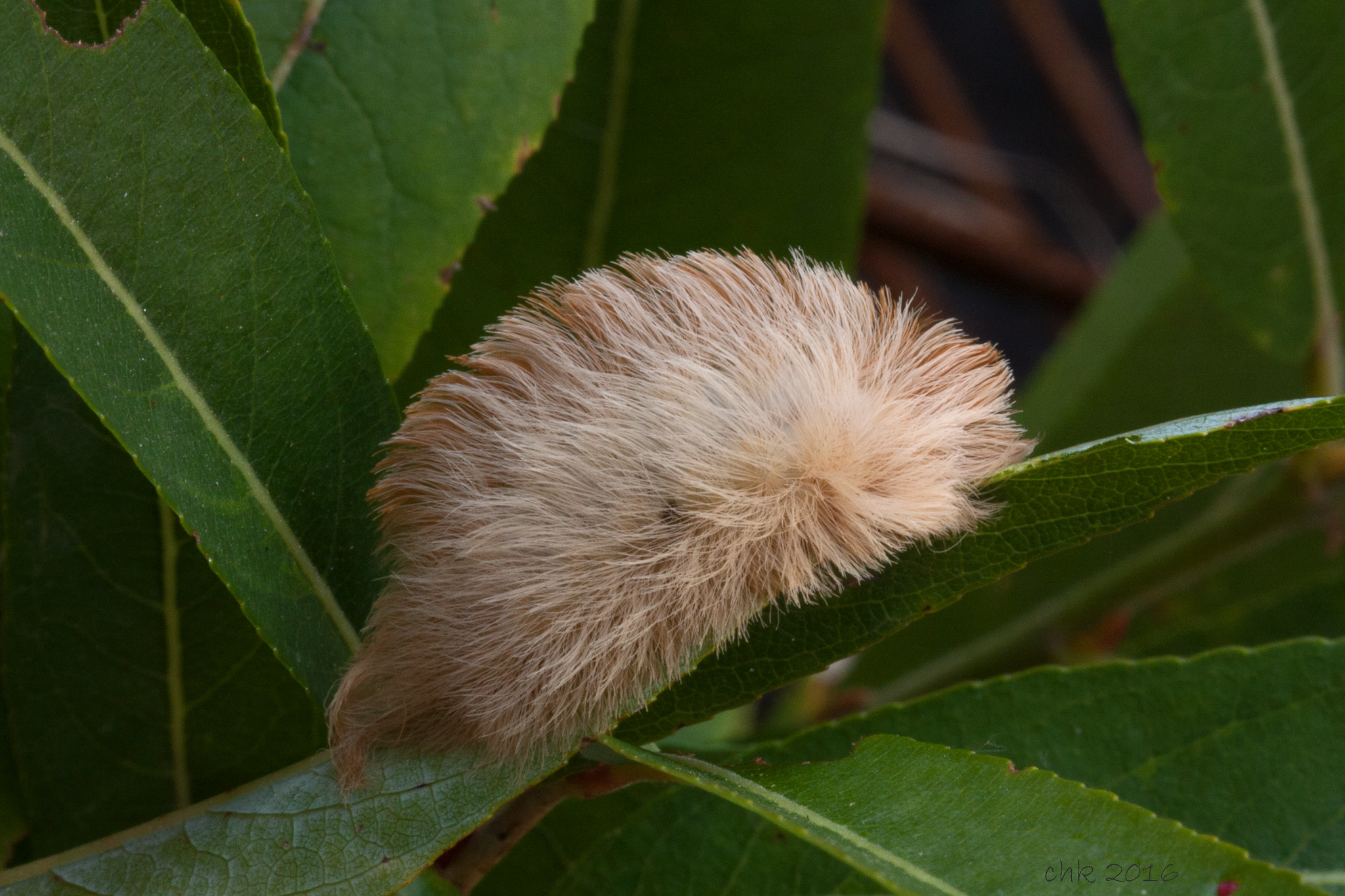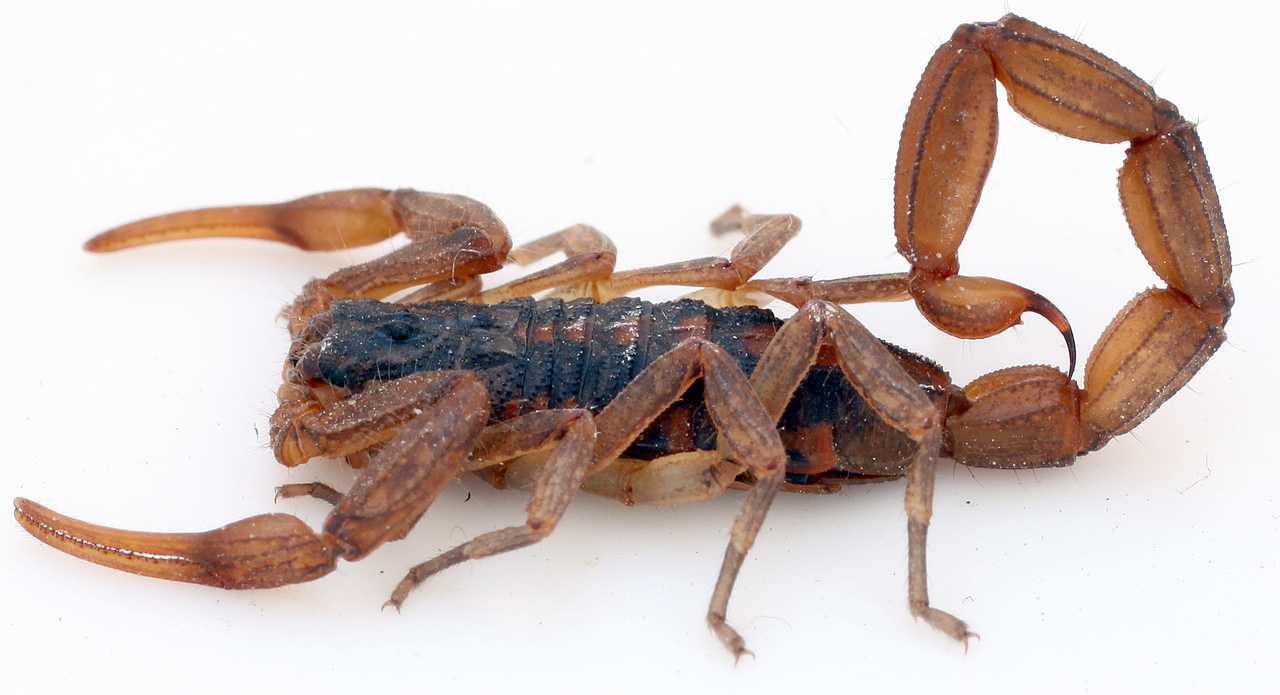Last January I went to Belize as part of a course to study tropical ecology. For three weeks we stayed in different parts of the diverse subtropical country and learned about all sorts of flora and fauna. While I learned a lot on this trip, the most memorable part will always be my encounter with the human botfly, Dermatobia hominis.

The botfly lives out its larval stage inside the skin of mammals, including humans. In its adult stage, the botfly is relatively big (about the size of a bumblebee), making it easily detectable. It therefore needs a subtle way of getting inside the skin so that it can grow.
To get her eggs to a mammalian host, the female botfly has an amazing behavior. She traps and lays her eggs on a blood-feeding insect, such as a mosquito, or a tick. This intermediary transfers the botfly eggs to a warm-blooded mammal when it goes for a meal. There the eggs hatch, and the tiny botfly larvae burrow in as they sense warm skin. The larva then gradually grows, forming a small lesion with a hole in the skin. The hole is used as a breathing tube for the larval botfly to get oxygen.

For the first two weeks, we stayed at three different rainforest locations: Hill Bank field station, La Milpa Ecolodge and Research Center, and Blue Creek Rainforest Preserve. What all of these locations had in common was that they were all in the middle of their wet season: a perfect time for mosquitos and other insects to get their biting on! I remember getting bitten several times while hiking and birding in the rainforests. Some of the bites, however, were a bit different from others: they lasted longer and even stung a little bit…
During my trip to Belize I accumulated six botfly larvae! My professor had seven (he even got one in his head!) and one other classmate had one. Although they are not harmful, it was still unpleasant to feel the larvae moving around in my skin. To remove them, I had to close the breathing hole, by putting duct tape on each hole. I then waited for two hours, at which point the larvae surfaced and were easily removed by tweezers. For the rest of the trip I was known as the botfly princess!
If you are curious and are not eating lunch right now, you can click here to watch the removal of a much bigger botfly larva. Squeamish folk, beware!




